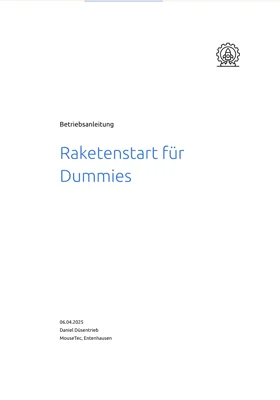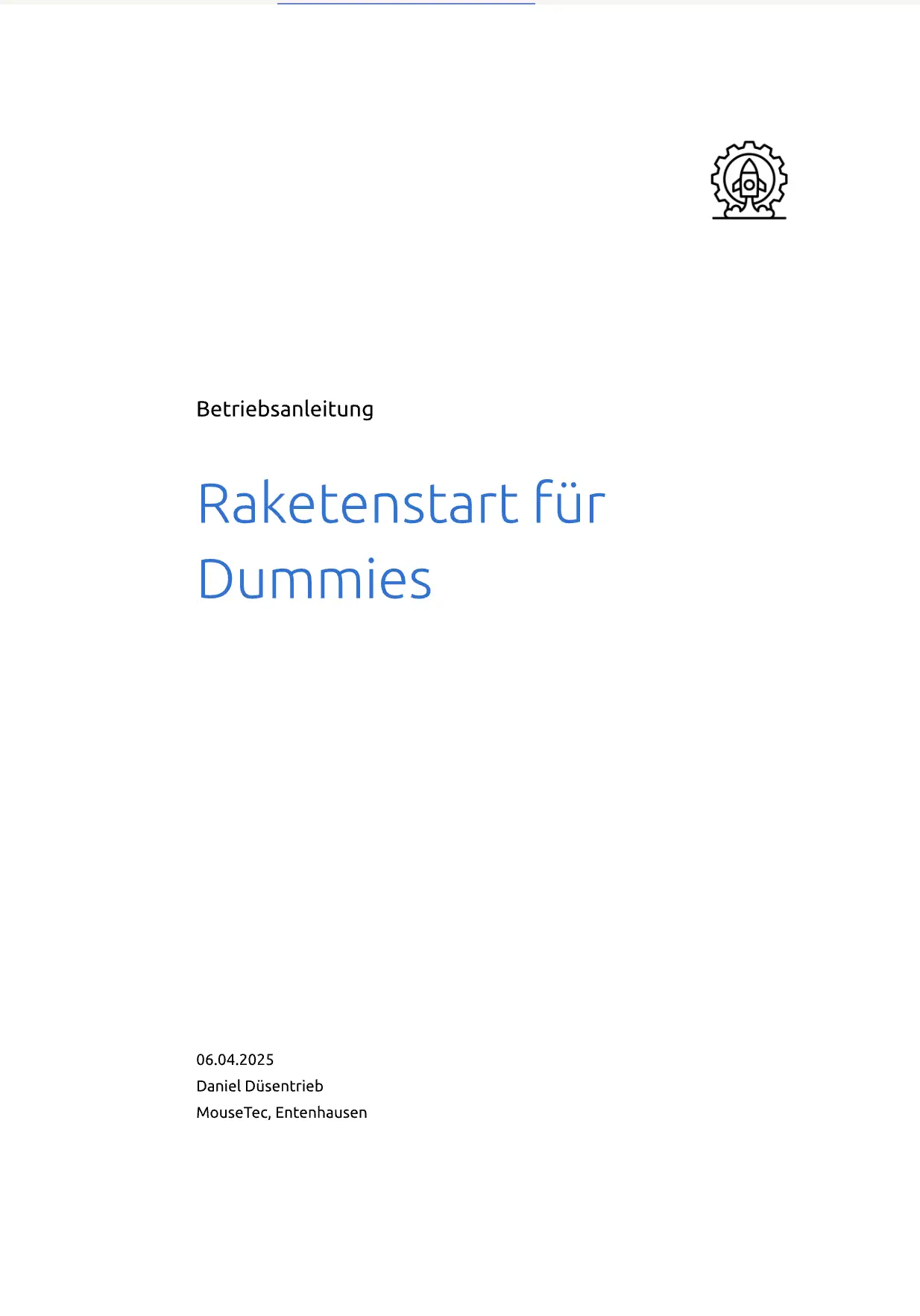A Typst template for shorter non-fiction documents like reports, manuals, requirements documentation, student assignments etc. An example document (PDF) that shows how it looks like, can be found here.
The template comes without bells and whistles and consists just of
- a titlepage with
- logo
- title & document category
- info block (date, author, affiliation)
- the TOC
- and then the contents (with currently three levels of headings)
The TOC uses roman page numbers, the rest of the document arabic numbers.
For documents with only a few pages there is often no need for an outline and a separate title page. For these documents there is a compact-mode, where title information is shown on the first text page. An example for this mode can be found here
Usage
You can use this template in the Typst web app by clicking “Start from template” on the dashboard and searching for basic-report.
Alternatively, you can use the CLI to kick this project off using the command
typst init @preview/basic-report
Typst will create a new directory with all the files needed to get you started.
Fonts
Vollkorn is used for the body text. It’s a high quality font for long texts designed by Friedrich Althausen. It was one of the first Google Fonts. But I recommend to download it from the designers project web page, because that variant has the small caps font included (on Google Fonts that’s a separate font). The online version of Typst has Vollkorn preinstalled.
In it’s current version it’s an extensive font with 12 styles as well as true small caps, a variety of localisations, a complete set of figures (proportional/tabular, lining/old style, small caps), many ligatures etc.
Ubuntu is the contrasting companion for headings, labels, the header, the titlepage etc. Designed by Dalton Maag it adds a contemporary touch with its own personality. Ubuntu is available via Google Fonts.
As the heading font can be changed using the parameter heading-font other variants can be used as well. The following fonts are good pairings with the body font Vollkorn and have been tested with the template:
- Lato is a bit more elegant than Ubuntu
- Fira Sans or Source Sans Pro can be used, if a more neutral appearance is desired (Note: The newer version of Source Sans Pro, named “Source Sans 3” has in some cases other default measures which do not work well with the template).
All three recommendations are pre-installed in the online version of Typst. If you want to use them on your local computer, you can get them from Google Fonts.
Packages Used
The Hydra package is used to display the current heading within the header.
Configuration
The template exports one function basic-report with the following named parameters:
doc-category (str): The documents category (e.g. “User Manual”, “Lab Report”, “Monthly Review”)doc-title (str): The documents titleauthor (str): The author; if there are several authors, they can just be listed within one string argument.affiliation (str): Organisation/Company etc.logo (image): animage(usage: e.g.image("path/to/image.svg"))language (str): Language of the document (default is “de”)show-outline (boolean): Show the outline (default istrue)compact-mode (boolean): If true, there is no TOC and no separate title page. All title information is displayed on the first text page (default isfalse)heading-color: The color of the title and all headings (default isblue)heading-font: The font used for the title and all headings (default is"Ubuntu"; recommended and tested alternatives are “Lato”, “Fira Sans” or “Source Sans Pro”)
Have a look at the example file main.typ whithin the template directory on how to use the basic-report-function with these parameters.

